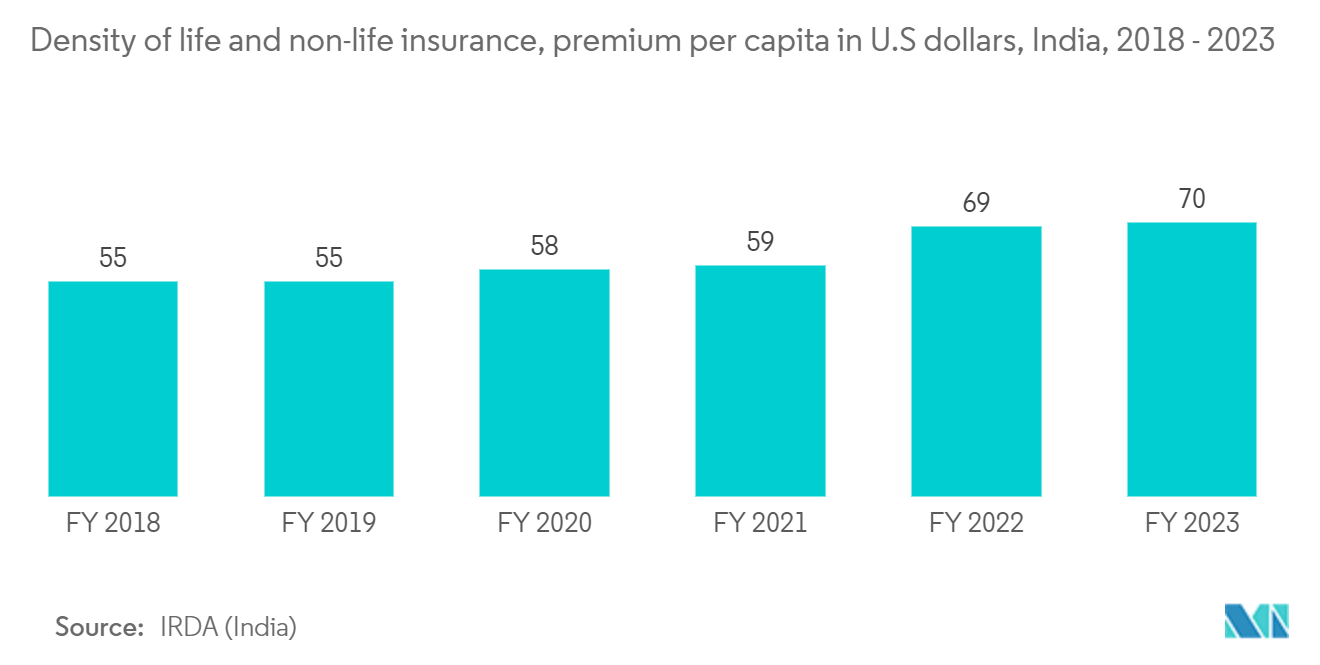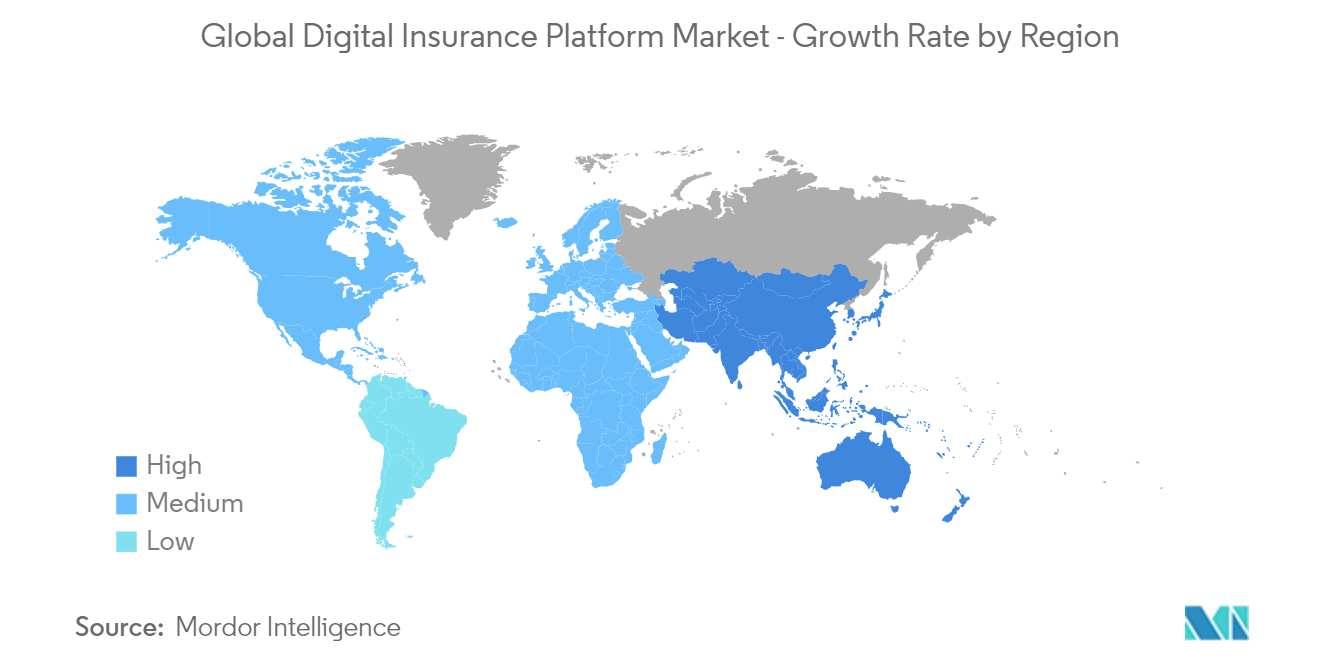Market Trends of Digital Insurance Platform Industry
Growing Cloud Adoption is Expected to Drive the Market Growth
- The increasing realization among enterprises about the importance of saving money and resources by moving their data to the cloud instead of building and maintaining new data storage is driving the demand for cloud-based solutions and hence, the adoption of on-demand digital insurance platforms in the region. Owing to multiple benefits, and over the course of the next few years, cloud platforms and ecosystems are anticipated to serve as a launchpad for an explosion in the pace and scale of digital innovation.
- Cloud-based insurance solutions can offer better social listening and higher conversion rates from opportunity to sale through targeted campaign management and improved opportunity and lead engagement models. This could result in higher upsell, cross-sell, and retention rates. Cloud can also enhance the claims experience by providing better service and better communication with end customers. This ability of the cloud is augmenting the growth of the cloud-based digital insurance platform market.
- Furthermore, deploying public cloud service extends the boundary of trust beyond the organization, making security a vital part of the cloud infrastructure. However, the increasing usage of cloud-based solutions has significantly simplified insurance firms' adoption of cybersecurity practices.With the increased adoption of cloud services, such as Google Drive, Dropbox, and Microsoft Azure, among others, and with these tools emerging as an integral part of business processes, enterprises must deal with security issues, such as loss of control over sensitive data. This gives rise to the increased incorporation of on-demand solutions.
- The increasing complexity of the healthcare IT landscape is driving healthcare organizations to look for alternate options that can support digital strategies and increase agility while reducing costs. For instance, last year, Red Hat announced that Medifé Asociación Civil, a non-profit healthcare insurance organization in Argentina, selected RedHat to implement a new digital application architecture based on Red Hat's open hybrid cloud technologies to support the changing remote healthcare services during a pandemic.
- Organizations with fluctuating bandwidth demand primarily need to scale up and down their capacity quickly. Cloud technology provides organizations with the flexibility they need to increase and decrease their bandwidth with the needs of their operation. This approach can cut costs and give businesses an edge over the competition.

Asia Pacific is Expected to Hold Significant Market Share
- The emergence of insurance ecosystems is only the beginning. The integration of payment and social media into platforms that enable targeted insurance marketing and offer highly responsive customer engagement capabilities is something that insurance companies see all over Asia. These platforms offer insurers payment and marketing services for the first time. As a result, those working in the tech industry can use their scale to provide insurance goods and services without duplicating some of the fees and expenses incurred by traditional insurance companies.
- According to IRDA(Insurance Regulatory and Development Authority), In India, there were 67 insurers in operation at the end of the last fiscal year. Out of these, five were independent health insurers, 27 were general insurers, and 24 were life insurers. 11 reinsurers, including branches of overseas reinsurers, were also present in the nation. Life Insurance Corporation (LIC) is the only company in the public sector that provides life insurance. In the non-life insurance business, there are six public sector insurers. In addition, the General Insurance Corporation of India is the only national reinsurer. Such a huge number of insurance firms will create an opportunity for the studied market to grow.
- Further, by 2029, Asia Pacific is estimated to account for 42% of global insurance premiums, with China's share forecast to be 20%, according to Swiss Re. The country is on course to become the largest insurance market by the mid-2030s. According to a report by Bain & Company, consumers in Asia-Pacific's developing markets are significantly underinsured, with one measure of insurance penetration, gross written premiums as a percentage of per-capita GDP, signaling a significant amount of unmet demand in Asia-Pacific's developing markets where penetration is less than 5% in India, mainland China, Indonesia, and Malaysia.
- The insurance distribution landscape is gradually evolving. In China, digital channels are becoming more prominent. In many Asia Pacific jurisdictions, consumers are open to having insurers provide ecosystem services. These digital insurance ecosystems are interconnected players forming sets of products and services that allow users to fulfill a variety of needs in one integrated experience. This is expected to augment the demand for a digital insurance platform.
- To meet the various demands of the customers and increase the market share, insurance firms in the region are investing in digitalization. For instance, this year, Warburg Pincus, a private equity (PE) firm, invested USD 350 million in equity to launch a digital general insurance platform in Southeast Asia. This is the business's largest investment in the region's insurance market.


